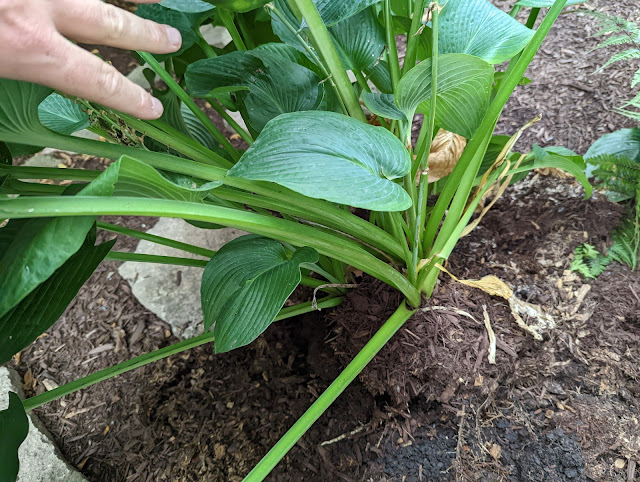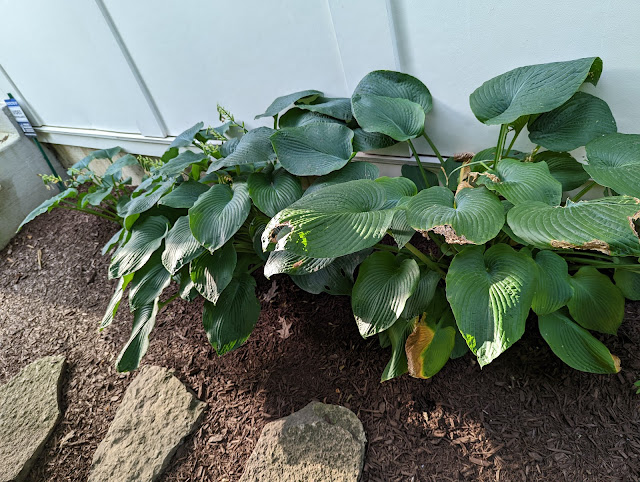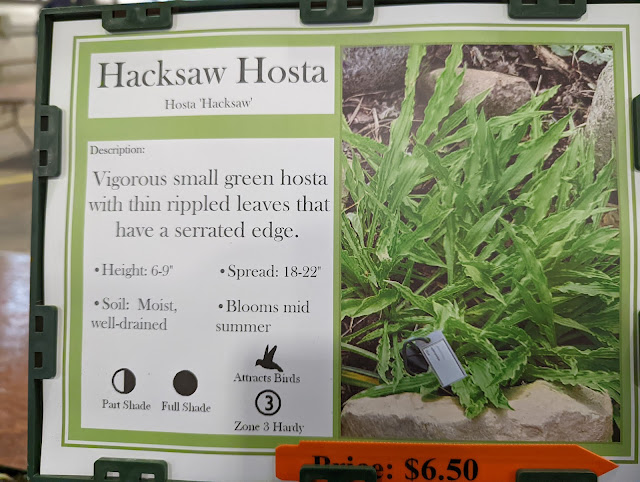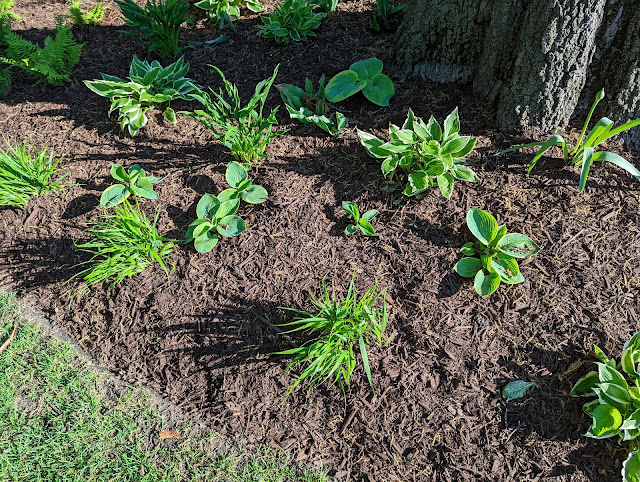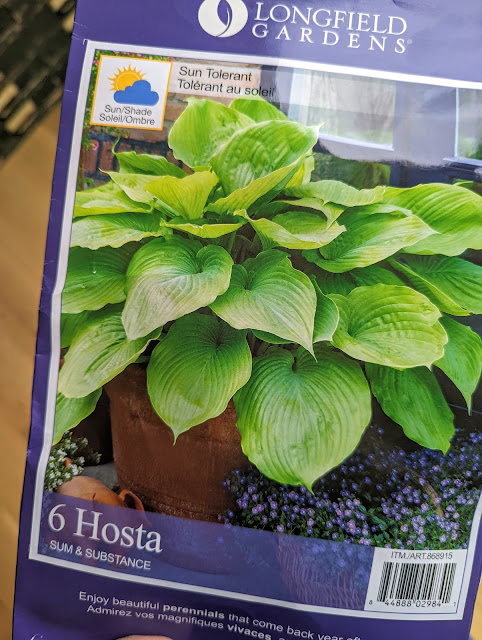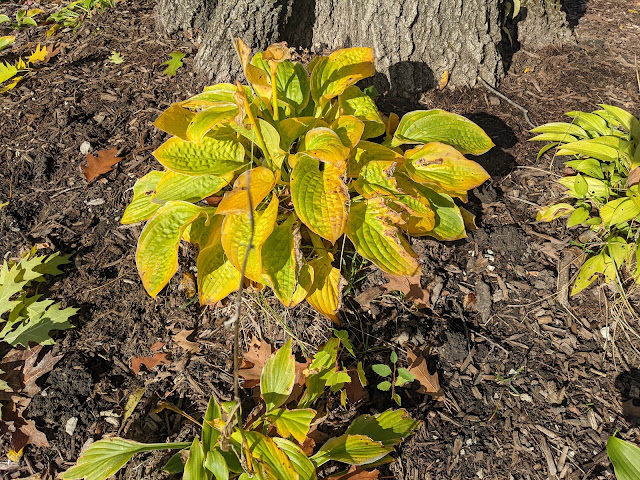Forbidden Fruit Hostas - Fall Planting - October 2022

The past two days, I've posted photos of plants that I picked up at the Lowes 50% off Fall sale starting with the Proven Winners Dolce Silver Heucheras . And just yesterday I posted details of five small quart containers of Ajuga Chocolate Chip groundcover . But, I also grabbed a few other things including a pair of these handsome hostas that have large white centers that sure made me pay attention to them mixed-in amongst other hostas. Look at the photo below to see the why I had to buy them: The color was striking. I pulled one of them off the rack and turned it around to figure out what the variety is named. Below is the plant tag that shows off the Monrovia tag and the name: Forbidden Fruit Plantain Lily. I whipped out my phone and did a quick search to figure the story of the Forbidden Fruit hosta out and came across this listing from NH Hostas . They called me out as one of those nursery suckers, lol. From their listing : Fully tetraploid sport of 'Orange Marm

